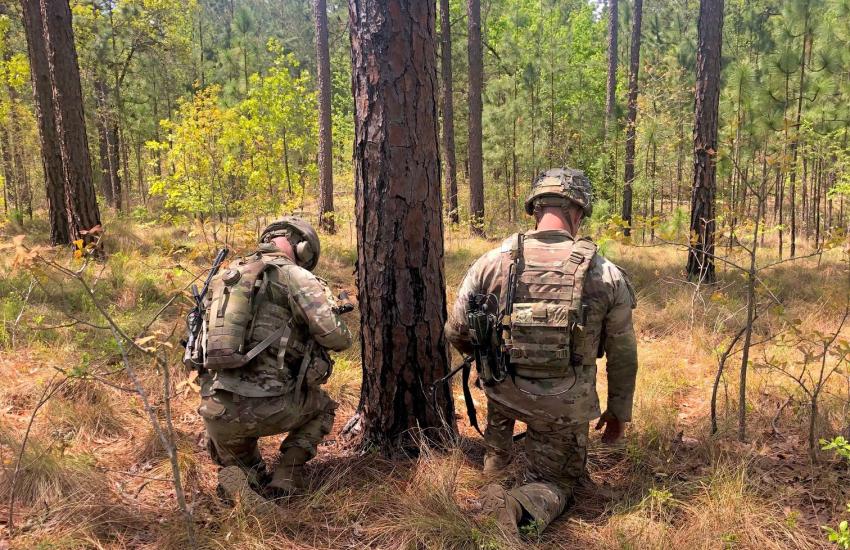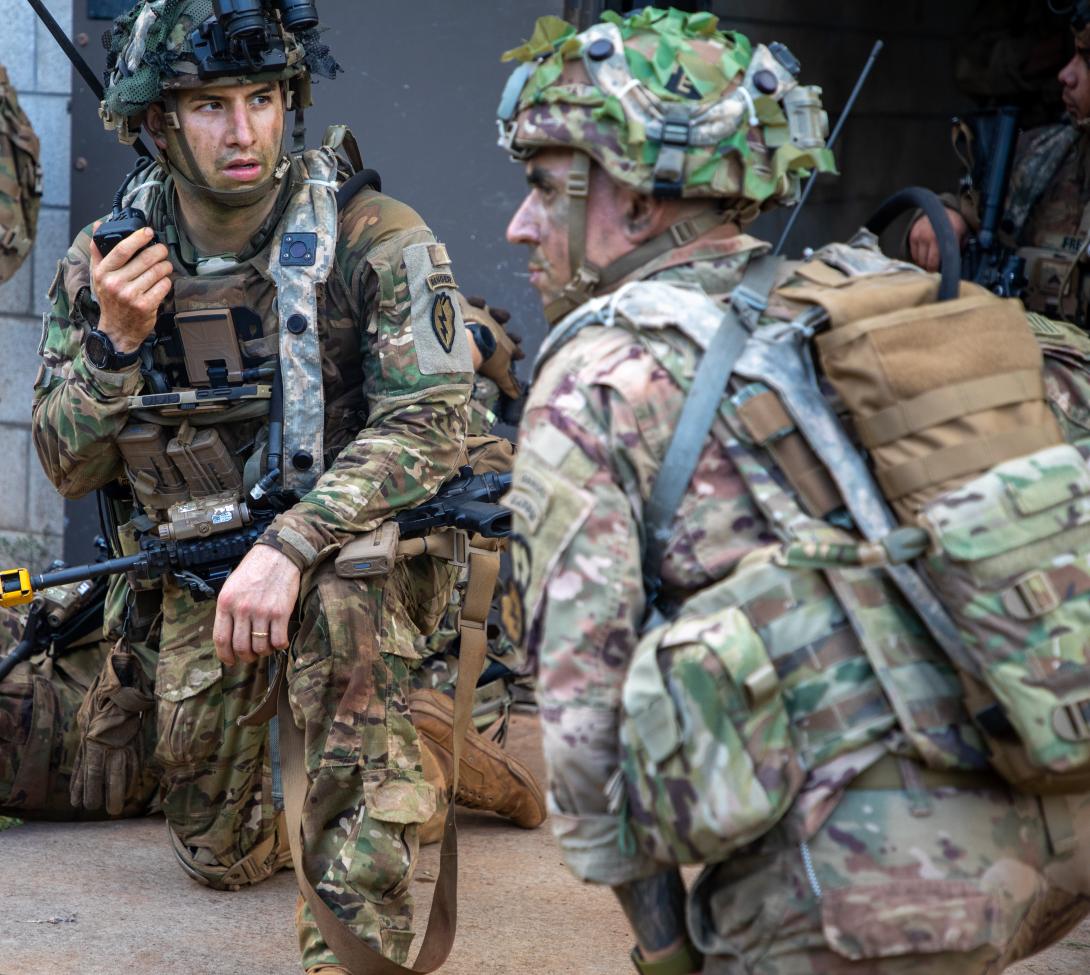Addressing the Need for Secure Waveforms and Radio Equipment
From Europe to the Pacific, the signals above the horizon that carry real-time battlefield communications are fundamental to the Army’s arsenal to achieve overmatch against sophisticated adversaries.
In response to this type of threat environment, the U.S. Army and intelligence communities enacted cryptographic and waveform modernization mandates that address the modernization and transformation of U.S. information assurance capabilities.
Specifically, the Army is executing acquisition programs to replace the aging Single Channel Ground and Airborne Radio System (SINCGARS), to modernize the SINCGARS waveform and to update additional waveforms to ensure they can securely communicate information in all environments.
SINCGARS modernization supports the Army’s unified network strategy by providing assured command and control and limited fires and air defense data in environments where access to the integrated tactical network is degraded, enabling additional communications options for commanders.
Developed in the 1980s, the current SINCGARS waveform is a tactical system used by the U.S. military and allied military forces that provides secure line-of-sight transmission for voice and data communications. The waveform runs on the SINCGARS radio, as well as the newer software-defined two-channel AN/PRC-148D and 163 Leader radios and the AN/PRC-158 and 162 Manpack radios.
Led by the Program Executive Office for Command, Control, Communications-Tactical (PEO C3T), in collaboration with the Combat Capabilities Development Command C5ISR Center, the Network Cross-Functional Team and the intelligence community, the Army developed a technical road map to help industry partners innovate a new solution for this mission-critical waveform, which would meet strict crypto requirements, including enhancements to both electronic warfare protection and voice quality.

The Army completed functional qualification testing and the National Security Agency Information Assurance acceptability. They also delivered the new waveform, now termed the SINCGARS FH3, to the Joint Tactical Network Center. Waveform evaluations were also conducted at Yuma Proving Ground, Arizona, where engineers performed electronic warfare and performance baseline assessments on the current fielded SINCGARS waveform and FH2/CT2.
The Army’s modernization strategy includes a SINCGARS-capable radio replacement called the Combat Network Radio (CNR), which is a single-channel voice and data radio developed through PEO C3T’s Product Manager Handheld, Manpack, Small Form Fit (HMS) radio program and PdM Waveforms to divest more than 322,000 legacy SINCGARS radios.
The CNR is a single-channel voice and data radio that is part of a holistic effort to phase out aging SINCGARS radios across all service components.
The CNR maintains the SINCGARS ability to provide very high frequency (VHF) communication capability, providing both voice and data handling capability in support of command and control operations. CNR-enabled communications will be used for voice transmission of command and control between surface and airborne command and control assets but will also be used to transmit and receive secure data, including position location information within a network via radio-based situational awareness and will function as a digital data radio. It operates in the VHF band and can be used in either single channel or frequency hopping configurations. The CNR facilitates communications with tactical enablers such as aviation, fires, coalition, host nation or other adjacent units that use legacy or modernized SINCGARS.
One critical attribute of the CNR is that it will be software programmable to accept future updates. It will provide multipath diversity at the tactical edge.

In fiscal year 2022, the Army awarded a multi-award, indefinite delivery, indefinite quantity contract for the new CNR to two radio vendors, L3 Harris and Thales. The CNR will replace the RT-1523 series legacy radios. It will also continue to support the SINCGARS waveform and its associated future upgrades.
More than 2,200 radios—including those to be used for quality checks and preliminary testing—have been ordered, with full-rate procurement expected to begin in FY 2023 and the first unit equipped in 2024. Once fielding begins, the CNR will be available to both mounted and dismounted missions.
Waveform modernization will also extend to air-to-ground communications. The Army’s Airborne SINCGARS capability, currently provided with the ARC-201D, will also be modernized with an air-to-ground networking radio, either an AN/PRC-158 or AN/PRC-162 Manpack. The projected first platform equipped for air-to-ground networking radio is FY 2025, with the first unit equipped in FY 2026.
The Army’s Tactical Satellite Communications (TACSAT) modernization strategy, which falls within the PdM HMS program, is yet another effort aimed to ensure radio modernization across the force. Based on an Army priority fielding list, 37 units across the U.S. Army Pacific, including the 25th Infantry Division in Hawaii, the Army National Guard in Guam and numerous U.S. Army European units, are currently receiving TACSAT modernization capabilities, featuring HMS Manpacks. One of the key capabilities that the TACSAT HMS radios will provide leverages the Mobile User Objective System over the PRC-158 Generation 2 Manpack, which enables vital beyond-line-of-sight voice and data communications critical for soldiers in the Indo-Pacific region to communicate inter-island, island to island and island to sea.
The need for modern, highly secure waveforms and radio equipment to transmit mission-critical communications across the battlefield is here today. SINCGARS modernization is addressing the need by providing cryptographic modernized capabilities for existing legacy radios in use by the United States, coalition partners and as part of foreign military sales. Air-to-ground and TACSAT communications are also key to achieving aerial tier and over-the-horizon secure communications. The Army’s radio and waveform modernization strategy is a continuous journey, but the Army is quickly delivering capabilities that are providing uninterrupted voice and data transmissions across the force.
Lt. Col. Sherida Whindleton, USA, is the former product manager for Product Manager Waveforms, under Project Manager Tactical Radios, Program Executive Office for Command, Control, Communications-Tactical (PEO C3T). Col. Whindleton is currently deputy director for the Army Prize Competition and Army Applied Small Business Innovation Research (SBIR) Program within Deputy Assistant Secretary of the Army Research & Technology.
Michael Mercurio is the deputy product manager for Product Manager Waveforms, under Project Manager Tactical Radios, PEO C3T. His office is the lead services executive agent for the Department of Defense in matters concerning the SINCGARS, TSM and WREN waveforms.
Kathryn Bailey is a public communications specialist for Bowhead Business & Technologies Solutions, assigned to PEO C3T. She is the lead public affairs representative for Product Manager Waveforms, under Project Manager Tactical Radios and Product Manager Capability Set Design, under Project Manager Interoperability, Integration and Services.






Comments